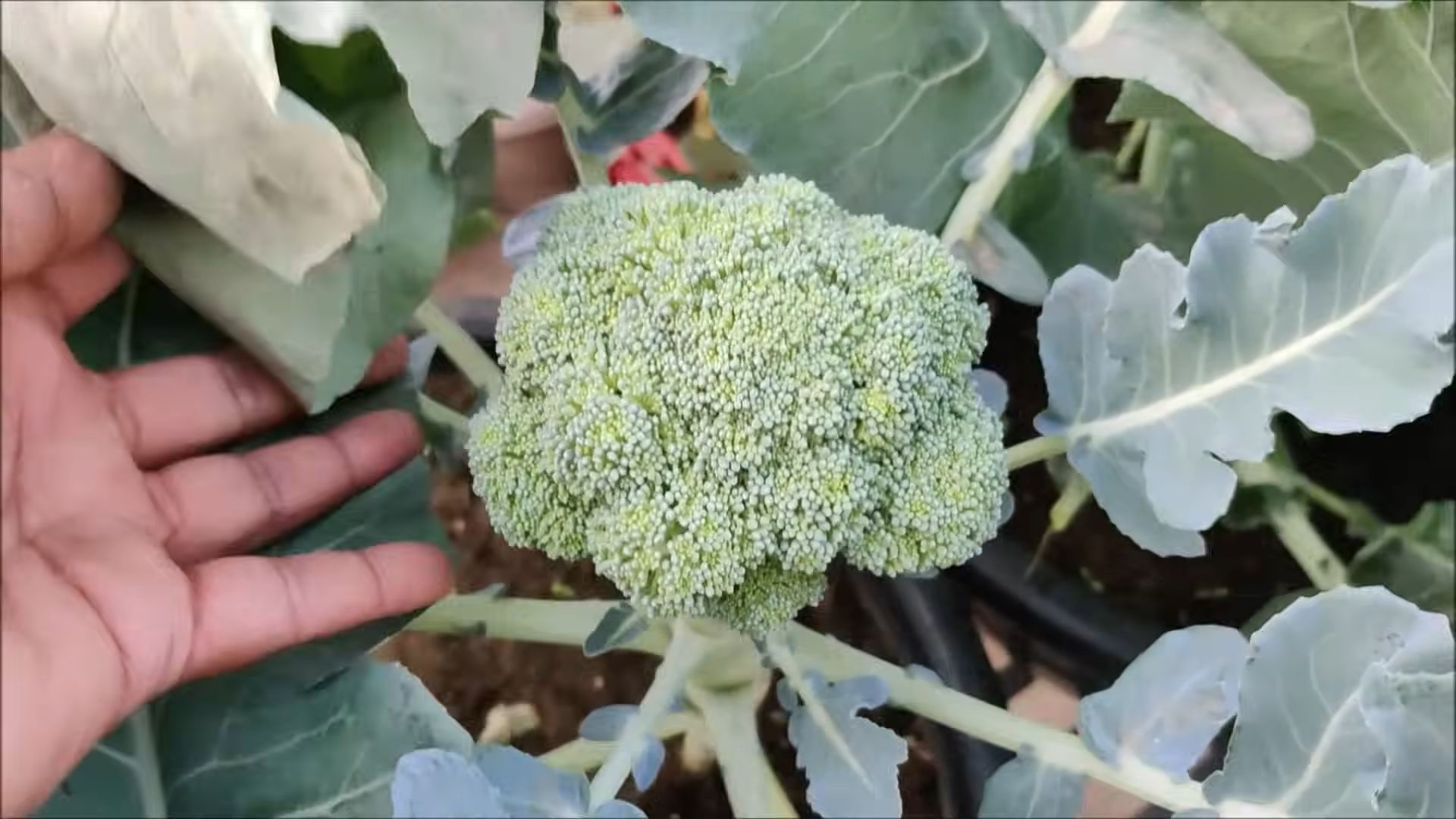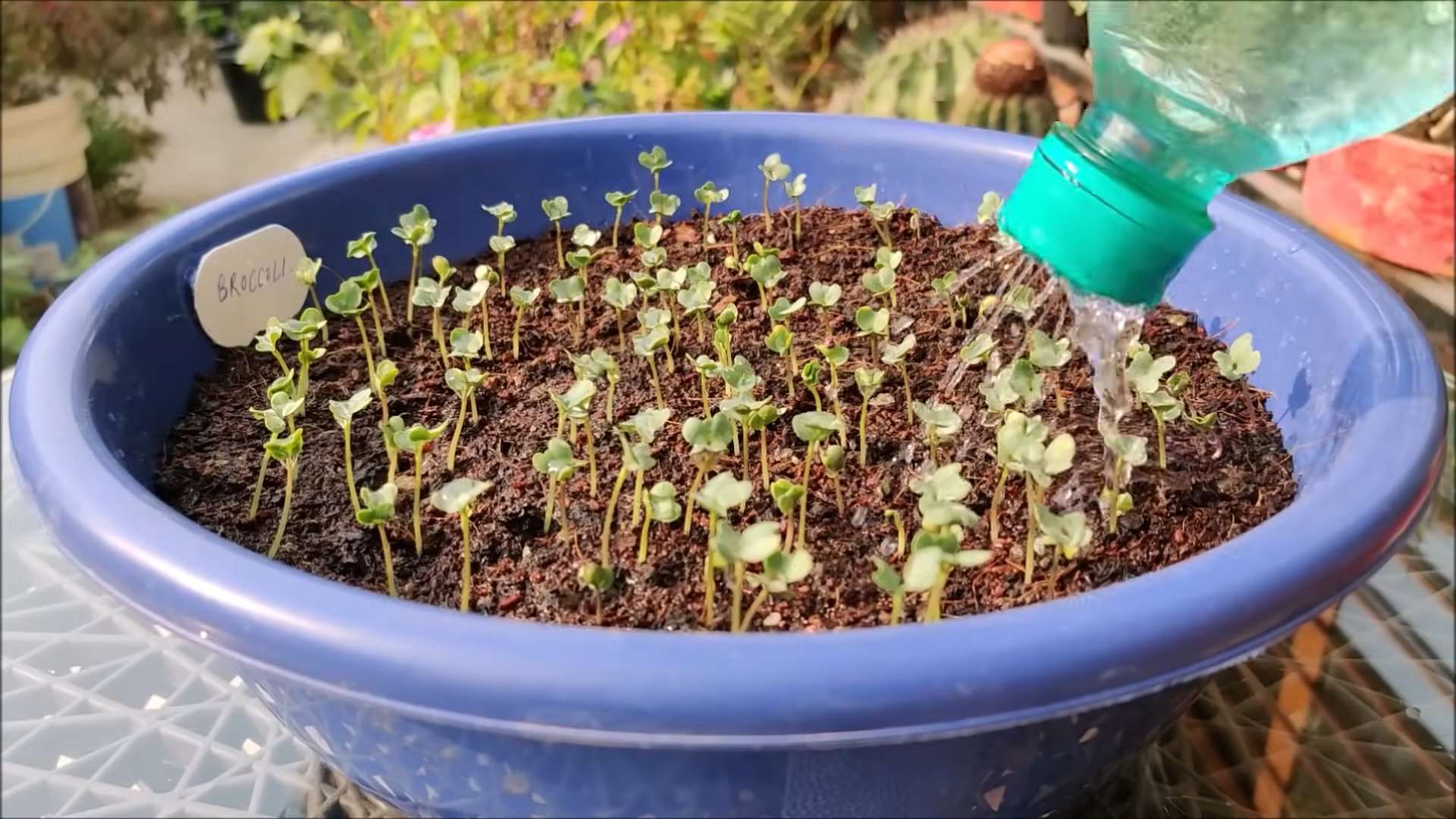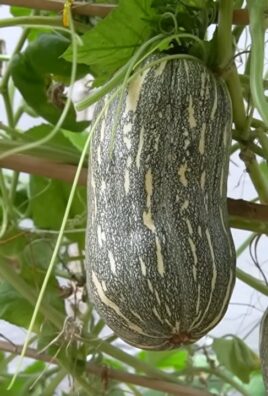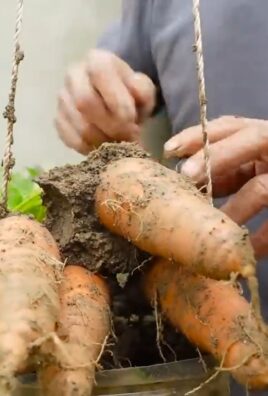Broccoli gardening for beginners can seem daunting, I know! But trust me, with a few simple tricks and a little DIY spirit, you can be harvesting your own delicious, homegrown broccoli in no time. Imagine serving up a vibrant, green broccoli side dish that you nurtured from seed to table – talk about a conversation starter!
Broccoli, a member of the Brassica family, has a rich history dating back to the Roman Empire. For centuries, it was a prized vegetable, carefully cultivated for its unique flavor and nutritional benefits. Today, it’s a staple in kitchens worldwide, and growing your own allows you to connect with that history in a tangible way.
Why bother with broccoli gardening for beginners, you ask? Well, store-bought broccoli often lacks the freshness and flavor of homegrown varieties. Plus, you have complete control over what goes into your garden, ensuring your broccoli is free from harmful pesticides and chemicals. In this article, I’ll share some easy-to-follow DIY hacks that will help you overcome common challenges, from choosing the right seeds to warding off pesky pests. Get ready to roll up your sleeves and discover the joy of growing your own broccoli!

Growing Broccoli: A Beginner’s Guide to a Bountiful Harvest
Okay, so you want to grow broccoli? Awesome! It’s a rewarding experience, and nothing beats the taste of fresh, homegrown broccoli. Don’t be intimidated; it’s totally doable, even if you’re a complete newbie. I’m going to walk you through everything you need to know, from choosing the right variety to harvesting your delicious florets.
Choosing Your Broccoli Variety
First things first, let’s talk broccoli types. There are tons of varieties out there, but here are a few popular and reliable choices for beginners:
* ‘Waltham 29’: This is a classic, reliable variety that produces large, dark green heads. It’s known for its good flavor and disease resistance.
* ‘Packman’: A fast-maturing variety, perfect if you’re a little impatient (like me!). It produces medium-sized heads and is great for smaller gardens.
* ‘DiCicco’: This heirloom variety is known for producing a large main head followed by numerous side shoots, giving you a longer harvest.
* ‘Green Magic’: A heat-tolerant variety, making it a good choice if you live in a warmer climate. It produces uniform, tightly beaded heads.
Consider your climate and the amount of space you have when making your choice. Seed packets will give you specific information about each variety’s growing requirements.
Starting Your Broccoli Seeds
You have two options here: starting seeds indoors or buying transplants. I usually start my seeds indoors because it gives me a head start on the growing season.
Starting Seeds Indoors
1. Gather Your Supplies: You’ll need seed starting trays or small pots, seed starting mix (not regular potting soil!), broccoli seeds, a spray bottle, and a grow light (optional, but highly recommended).
2. Fill Your Trays: Moisten the seed starting mix and fill your trays or pots, leaving about half an inch of space at the top.
3. Sow the Seeds: Plant 2-3 seeds per cell or pot, about ¼ inch deep. Gently cover the seeds with more seed starting mix.
4. Water Carefully: Use a spray bottle to gently water the soil. You want it moist, but not soggy.
5. Provide Light and Warmth: Place the trays in a warm location (around 70-75°F) and under a grow light if you have one. If not, a sunny windowsill will work, but be sure to rotate the trays regularly to prevent the seedlings from leaning towards the light.
6. Keep the Soil Moist: Check the soil daily and water as needed to keep it consistently moist.
7. Thin the Seedlings: Once the seedlings have their first true leaves (the second set of leaves that appear after the initial seed leaves), thin them to one seedling per cell or pot. Snip off the weaker seedlings at the soil line with scissors. Don’t pull them out, as this can disturb the roots of the remaining seedling.
8. Harden Off the Seedlings: About a week before you plan to transplant the seedlings outdoors, you’ll need to “harden them off.” This means gradually exposing them to outdoor conditions to help them adjust. Start by placing them outside in a sheltered location for an hour or two each day, gradually increasing the amount of time they spend outdoors. Protect them from direct sunlight and strong winds.
Buying Transplants
If you’re short on time or space, buying transplants is a perfectly good option. Look for healthy-looking plants with sturdy stems and dark green leaves. Avoid plants that are leggy (tall and spindly) or have yellowing leaves.
Preparing Your Garden Bed
Broccoli needs a sunny spot with well-drained soil. Aim for at least 6 hours of direct sunlight per day.
1. Choose a Sunny Location: As I mentioned, sunlight is key! Pick a spot in your garden that gets plenty of sunshine.
2. Prepare the Soil: Broccoli loves rich, fertile soil. Amend your soil with compost or well-rotted manure to improve drainage and add nutrients. Work the amendments into the soil to a depth of at least 12 inches.
3. Check the Soil pH: Broccoli prefers a soil pH between 6.0 and 7.0. You can test your soil pH with a soil testing kit. If your soil is too acidic (below 6.0), add lime to raise the pH. If it’s too alkaline (above 7.0), add sulfur to lower the pH.
4. Consider Raised Beds: If your soil is heavy clay or poorly drained, consider planting your broccoli in raised beds. This will improve drainage and make it easier to work the soil.
Transplanting Your Broccoli
Whether you started your own seeds or bought transplants, it’s time to get those broccoli plants in the ground!
1. Choose the Right Time: Transplant your broccoli seedlings outdoors 2-3 weeks before the last expected frost in spring, or in late summer for a fall harvest.
2. Space the Plants Properly: Space the plants 18-24 inches apart in rows that are 24-36 inches apart. This will give them enough room to grow and allow for good air circulation.
3. Dig the Holes: Dig holes that are slightly larger than the root ball of the seedlings.
4. Gently Remove the Seedlings: Carefully remove the seedlings from their trays or pots, being careful not to damage the roots.
5. Plant the Seedlings: Place the seedlings in the holes and gently backfill with soil. Make sure the top of the root ball is level with the surrounding soil.
6. Water Thoroughly: Water the plants thoroughly after transplanting.
7. Mulch Around the Plants: Apply a layer of mulch around the plants to help retain moisture, suppress weeds, and regulate soil temperature. Straw, wood chips, or shredded leaves are all good choices.
Caring for Your Broccoli Plants
Now that your broccoli is in the ground, it’s time to give it some TLC.
1. Water Regularly: Broccoli needs consistent moisture, especially during hot, dry weather. Water deeply whenever the top inch of soil feels dry.
2. Fertilize Regularly: Broccoli is a heavy feeder, so it needs regular fertilization. Apply a balanced fertilizer (like 10-10-10) every 2-3 weeks, following the instructions on the fertilizer package. You can also side-dress with compost or well-rotted manure.
3. Control Weeds: Weeds can compete with your broccoli plants for water and nutrients. Keep the area around your plants free of weeds by hand-pulling or using a hoe. Mulching will also help suppress weeds.
4. Watch Out for Pests: Broccoli is susceptible to several pests, including cabbage worms, aphids, and flea beetles. Inspect your plants regularly for signs of infestation.
* Cabbage Worms: These green caterpillars can devour your broccoli leaves. Hand-pick them off the plants or use a biological insecticide like Bacillus thuringiensis (Bt).
* Aphids: These tiny insects suck the sap from plants, causing them to weaken and distort. Spray them off with a strong stream of water or use insecticidal soap.
* Flea Beetles: These small, jumping beetles can create tiny holes in the leaves. Cover your plants with row covers to prevent them from reaching the plants.
5. Protect from Extreme Weather: Broccoli can tolerate light frost, but it’s best to protect it from severe cold or heat. Cover the plants with row covers or blankets during cold snaps. Provide shade during periods of intense heat.
Harvesting Your Broccoli
The moment you’ve been waiting for! Harvesting your broccoli at the right time is crucial for getting the best flavor and texture.
1. Know When to Harvest: Harvest your broccoli when the heads are firm and tightly beaded, before the flower buds start to open. The size of the head will vary depending on the variety, but generally, you want to harvest when the head is about 6-8 inches in diameter.
2. Use a Sharp Knife: Cut the main head off the plant with a sharp knife, leaving about 4-6 inches of stem.
3. Encourage Side Shoots: After harvesting the main head, the plant will produce side shoots. These smaller florets will continue to develop over several weeks, giving you a longer harvest.
4. Harvest Side Shoots Regularly: Harvest the side shoots when they are about 4-6 inches long.
5. Store Your Broccoli: Store your freshly harvested broccoli in the refrigerator for up to a week. To keep it fresh, wrap it loosely in a damp paper towel and place it in a plastic bag.
Troubleshooting Common Broccoli Problems
Even with the best care, you might encounter some problems along the way. Here are a few common issues and how to deal with them:
* Button

Conclusion
So, there you have it! Broccoli gardening for beginners doesn’t have to be intimidating. It’s a rewarding journey that brings fresh, delicious, and nutritious broccoli right to your table. We’ve covered the essentials, from selecting the right variety and preparing your soil to planting, nurturing, and harvesting your own homegrown broccoli.
Why is this DIY approach a must-try? Because it puts you in control. You know exactly what goes into your food, avoiding potentially harmful pesticides and fertilizers. Plus, the taste of freshly harvested broccoli from your own garden is simply unparalleled. It’s sweeter, crisper, and bursting with flavor compared to store-bought options. Beyond the taste, gardening is therapeutic. It connects you with nature, reduces stress, and provides a sense of accomplishment.
But don’t stop there! Experiment with different broccoli varieties. Try growing sprouting broccoli for a continuous harvest of tender florets. Or, consider planting purple sprouting broccoli for a visually stunning and equally delicious addition to your garden. You can also explore companion planting. Marigolds, for example, can help deter pests, while herbs like dill and rosemary can attract beneficial insects.
Another variation to consider is succession planting. By planting new broccoli seedlings every few weeks, you can extend your harvest season and enjoy fresh broccoli for a longer period. This is especially useful in regions with shorter growing seasons.
Remember to pay close attention to your broccoli plants and address any issues promptly. Regular watering, proper fertilization, and vigilant pest control are key to a successful harvest. Don’t be afraid to get your hands dirty and learn from your experiences. Every garden is unique, and what works for one person may not work for another.
We are confident that with a little planning and effort, you can successfully grow your own broccoli, even as a beginner. The satisfaction of harvesting your own homegrown vegetables is truly rewarding.
Now, it’s your turn! Grab your gardening gloves, prepare your soil, and start planting. We encourage you to try this DIY broccoli gardening trick and share your experiences with us. Let us know what varieties you’re growing, what challenges you’ve faced, and what successes you’ve achieved. Share your tips and tricks with fellow gardeners and help us all learn and grow together. Post pictures of your beautiful broccoli plants and delicious recipes using your homegrown harvest. We can’t wait to see what you create! Happy gardening!
Frequently Asked Questions (FAQ)
Q: How much sunlight does broccoli need?
A: Broccoli thrives in full sun, meaning at least 6 hours of direct sunlight per day. Insufficient sunlight can lead to leggy plants with small heads. If you live in a particularly hot climate, providing some afternoon shade can help prevent bolting (premature flowering).
Q: What kind of soil is best for growing broccoli?
A: Broccoli prefers well-drained, fertile soil with a pH between 6.0 and 7.0. Amend your soil with compost or other organic matter to improve drainage and nutrient content. A soil test can help you determine the pH and nutrient levels of your soil. If your soil is too acidic, you can add lime to raise the pH.
Q: How often should I water my broccoli plants?
A: Broccoli needs consistent moisture, especially during head formation. Water deeply and regularly, aiming for about 1-1.5 inches of water per week. Avoid overhead watering, as this can promote fungal diseases. Use a soaker hose or drip irrigation to water at the base of the plants. Check the soil moisture regularly and adjust your watering schedule accordingly.
Q: What are some common pests and diseases that affect broccoli?
A: Common pests include cabbage worms, aphids, flea beetles, and cabbage root maggots. Diseases include clubroot, black rot, and downy mildew. Regularly inspect your plants for signs of pests or diseases. Use organic pest control methods, such as handpicking pests, using insecticidal soap, or applying Bacillus thuringiensis (Bt) for cabbage worms. Ensure good air circulation to prevent fungal diseases. Crop rotation can also help reduce the risk of soilborne diseases.
Q: When is the best time to harvest broccoli?
A: Harvest broccoli when the heads are firm and the florets are tightly closed. The ideal size of the head will depend on the variety, but generally, you should harvest before the florets start to open and turn yellow. Use a sharp knife to cut the head from the plant, leaving a few inches of stem. Side shoots may develop after the main head is harvested, providing additional smaller florets.
Q: Can I grow broccoli in containers?
A: Yes, you can grow broccoli in containers, but you’ll need a large container (at least 5 gallons) with good drainage. Choose a compact broccoli variety that is well-suited for container gardening. Use a high-quality potting mix and fertilize regularly. Container-grown broccoli may require more frequent watering than broccoli grown in the ground.
Q: How do I prevent broccoli from bolting?
A: Bolting (premature flowering) can be caused by stress, such as extreme temperatures, drought, or poor soil. Choose bolt-resistant varieties and provide consistent watering and fertilization. In hot climates, provide some afternoon shade to prevent bolting. Harvest the broccoli head as soon as it is ready to prevent it from bolting.
Q: What are some good companion plants for broccoli?
A: Good companion plants for broccoli include marigolds, nasturtiums, dill, rosemary, thyme, onions, garlic, and chamomile. Marigolds and nasturtiums deter pests, while herbs like dill and rosemary attract beneficial insects. Onions and garlic can help repel aphids and other pests. Chamomile is believed to improve the flavor of broccoli. Avoid planting broccoli near tomatoes, strawberries, or peppers, as they can compete for nutrients or attract pests.
Q: How do I store harvested broccoli?
A: Store harvested broccoli in the refrigerator in a plastic bag or container. Broccoli is best used within a few days of harvesting. You can also blanch and freeze broccoli for longer storage. To blanch broccoli, cut it into florets and boil for 3-5 minutes. Then, immediately plunge the florets into ice water to stop the cooking process. Drain well and freeze in freezer bags or containers.
Q: Is it really worth it to grow my own broccoli?
A: Absolutely! While it requires some effort, growing your own broccoli offers numerous benefits. You’ll have access to fresher, more flavorful broccoli that is free from harmful pesticides. You’ll also save money compared to buying broccoli from the store. Plus, gardening is a rewarding and therapeutic activity that connects you with nature. The taste of homegrown broccoli is truly superior, and the satisfaction of harvesting your own vegetables is unmatched. Give it a try, and you’ll be amazed at the difference!




Leave a Comment